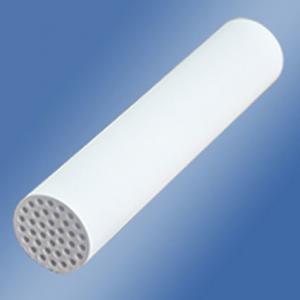Customized Ceramic Membrane Filtration System For High-Temperature Wastewater Treatment
Product Description
Our ceramic membranes provide an asymmetric membrane structure and are made of Al2O3, TiO2, ZrO2 via special process. This kind of ceramic membrane has the performance of great flux, low filtration resistance, low fouling, easy to clean and backwash. Advantages: - Resistance to strong acid, alkali and oxidation
- Resistance to organic solvents
- Resistance to high temperature (up to 150ºC)
- Wearing resistance
- High separation precision
- High strength and long lifetime
- High flux and available backwash
- Simple operation and low maintenance cost
Technical Specification As a leading manufacturer of ceramic membranes, we can supply various configurations, full range of pore size, diameter, length& channel quantity for your wide selection. We can also produce and offer customized ceramic membranes according to clients' special requirements. | Membrane Element |
| Material | Support Layer | α-Al2O3 |
| Membrane Layer | α-Al2O3,ZrO2,TiO2 |
| Pore Size | From 800nm to 10nm |
| pH | 0-14 |
Bending Pressure
(Outer Diameter) | 25mm | ≥40bar |
| 30mm | ≥60bar |
| 41mm | ≥80bar |
| Organic Solvent | Not sensitive |
| Operation Temperature | <350ºC |
| Operation Pressure | ≤10bar |

Configuration
 Application
Application Industrial Wastewater Treatment - Oily wastewater from cold rolling, metal cleaning, coking
- Particles separation from: Titanium washing liquid and catalysts recovery
- Oil field injection water treatment;
- Grinding and micro-electronics wastewater treatment
Food, Fermentation Industry - Broth clarification and purification;
- Soy sauce and vinegar filtration;
- Juices, beverages and liquor clarification and filtration;
- Milk standardization and sterilization;
- Fermentation product separation and refining;
Bio-pharmaceutical industry - Herbal extraction and purification;
- Oral clarification and filtration;
- Biological products purification and refining;
- Activated carbon separation and recovery
Others - Dust removal from high temperature gas;
- Natural pigment production
- Brine purification
- Rare metal enrichment
- Separation and preparation of new materials
- Inorganic membrane catalytic reactor
- Concentration and purification of nanomaterials












